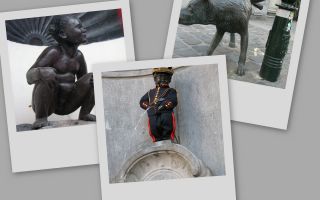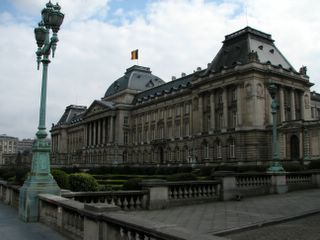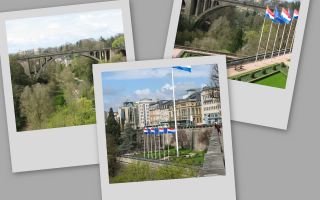Day 6
The last day of our Easter trip! We woke up in Brussels and had most of the day to explore around before our flight out.

First stop Mannekin Pis. Exactly what it says, it is a boy doing pee pee. He is a nationally recognised statue that even has his own wardrobe. Throughout the year he dresses in different clothing to mark national days or events. Today he is in his national guard's outfit!

Why stop at one urinating figure? Jeanneke Pis is the female version that was erected 'in honour of loyalty'. A fairly obvious connection, we would have thought... Man's best friend also gets a statue with Zinneke Pis, although he is a bit less animated, if you know what we mean. Mannekin Pis is in his Boy Scout outfit in this picture!

Guild halls, which along with the town hall, encompass the Grand Place (central square). The guildhalls were destroyed in 1695 and have been subsequently rebuilt.

More of the guild halls.

The Hotel De Ville. The Brussels town hall is built in gothic style and was spared during the 1695 French bombardment. This was more so due to luck, rather than any aesthetic value, since it was actually the target of the raids. Another interesting point about the building is that it was built in sections. The left hand side was built in 1402 and the right hand side built in 1444. Only problem was that when it came time to build the right hand side there wasn't enough room to make it the same length as the left hand side - hence it is 5 windows shorter.

The finishings on the guild halls is very intricate. Each hall is decorated in figures that depict the trade of the guild.

Tintin, the inquisitive reporter-come-sleuth, lived in Brussels. Herge, who created him, was also from Brussels. Liam got the chance to re-live some of his favourite childhood stories.

Palais de Justice. The huge law courts is an imposing building, as it was designed to be. It is on a hill above the main centre of Brussels, and it looks down upon the town as a symbol of the power of the law.

Just a small portion of the main hall of the Palais de Justice. There are many court rooms leading off the corridors around the hall. On the day we visited, most of the courts were in session. There were also art students, or just artists, littered all over the building, sketching the architecture or statues.

Place du Petit Sablon. These well manicured gardens have many statues throughout. On the walls that define the garden there are 48 bronze statuettes that depict the medieval guilds.

Palais Royal. The palace is no longer a royal residence.

Belgium parliament buildings.


Cathedrale des St Michel and St Gudule. The twin-towered church has been used for royal weddings and has been visited by the pope. It took over 300 years to build.

The magnificent pipe organ in the church. We were lucky enough to have the organist practicing on the day we visited, so the church was filled with musical hymns.

The pulpit is sculptured from wood. It depicts Adam and Eve been driven out of Eden by skeletons. This is one of the most impressive pulpits we have seen so far.

Pavement cafes in the alleys off the Grand Place. Most of the cafes have fixed menus and there is constant bartering and bickering between maitre d's to fill the tables. We picked a cafe and had dinner there before catching a train to the airport.
So that concludes our Easter travels. We definately cover a lot of ground during the 6 days and loved every minute of it (even the traffic jam in Belgium!). We would love to see more of all of these countries, especially Luxembourg but the rest of Europe calls!























































